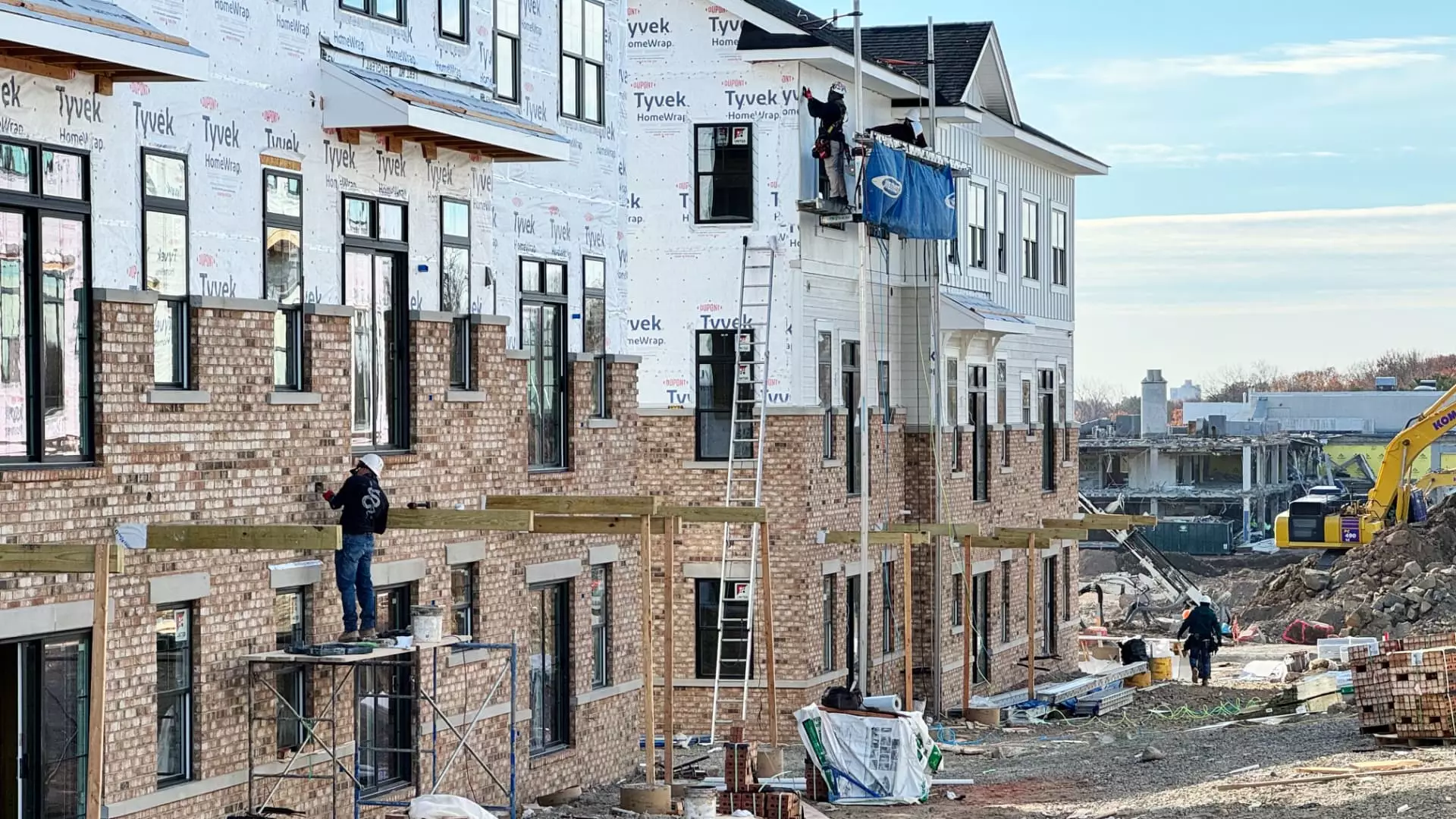In the realm of economic foreboding, rising inflation levels have repeatedly triggered alarm bells, and one of the most critical elements impacting this unwieldy phenomenon is the housing sector. As President-elect Donald Trump gears up to implement his economic policies, the role of housing costs in managing inflation becomes an arena demanding urgent attention. Recent data reveals a convoluted landscape as the Consumer Price Index (CPI) indicates not only challenges but also minor positive developments that could influence the new administration’s approach.
The latest CPI report offers a dual narrative: while housing costs reported their slowest annual increase in many months, the overall rise remains stubbornly high. Specifically, shelter—the category accounting for nearly one-third of the CPI—showed growth at just 4.7%, the lowest since February 2022. This increment is still significant, especially considering that, barring the disruptions caused by the COVID-19 pandemic, similar inflation rates were unseen since the early 1990s when the CPI hovered around 5%.
Inflation’s complexities are illustrated by the Bureau of Labor Statistics, which attributes approximately 40% of the monthly CPI increase to housing costs, exceeding contributions from food prices. Current inflation levels, reaching an annual rate of 2.7%—or 3.3% when excluding volatile food and energy prices—cast a shadow over assurances that the Federal Reserve’s 2% target for inflation is achievable in the near future. The critical insight from economic experts like Lisa Sturtevant, chief economist at Bright MLS, hints at a longer timeline for stabilizing rent growth, signifying that, despite some indicators of easing, housing expenses could continue to dampen optimistic inflation narratives.
The root causes of the persistent inflation in housing are ensconced in a prolonged imbalance between supply and demand, a situation exacerbated during the pandemic’s peak. The inventory of available homes remains around 17% lower than five years ago, leaving prospective homeowners and renters grappling with limited options and aggravated prices. More disconcerting, the average national rent as recorded in October was $2,009 per month—still reflecting a 3.3% increase over the previous year and an alarming 30% surge over the last four years, as highlighted by Zillow’s data.
This dynamic poses a palpable threat to the new administration, as Trump’s economic strategies, which include tax incentives and potential tariffs, may unwittingly inflame inflation further. Sturtevant’s cautionary note echoes the reluctance among economists to fully endorse the prospects for stabilization in housing costs, particularly when governmental interventions seem inconceivable in the short term.
Central to the balancing act of inflation management is the Federal Reserve’s monetary policy, particularly its influence on interest rates. While recent cuts by the Fed—totaling three-quarters of a percentage point since September—suggest a more accommodating borrowing environment, actual mortgage rates have not mirrored these reductions. They have climbed nearly in tandem with the Fed’s adjustments, keeping the cost of homeownership out of reach for many.
This predicament places Trump in a paradoxical situation: any efforts he may pursue to alleviate housing costs are entangled with the need for lower interest rates, which in turn cannot be realized without first addressing shelter costs. Policymakers find themselves navigating this complex web of interdependencies with little clarity on how best to proceed.
As Trump prepares to unveil his approach to the housing crisis, the economic landscape presents both risks and opportunities. His administration’s initiatives, particularly those aimed at deregulating construction processes and optimizing land usage for residential development, could potentially bolster housing supply. However, while positive, these moves must be weighed against the realities of existing market conditions and demand fluctuations.
Short-term alleviation appears precarious, and the projected slow growth in rent and shelter costs may only become visible over an extended timeline, leaving both the administration and citizens in a quagmire of inflationary pressures.
The continued discourse in the financial sector shows a cautiously optimistic outlook, with Bank of America’s Stephen Juneau noting that rents might be normalizing appropriately in line with the Federal Reserve’s ultimate goal. Loftier ideals notwithstanding, concerns linger that shelter expenses remain the leading contributors to inflationary trends, complicating the path forward for economic policymakers and President Trump alike.
As this narrative unfolds, one thing is clear: the intricate relationship between housing costs and inflation will demand rigorous scrutiny and thoughtful intervention strategies to navigate the murky waters of the economy.

